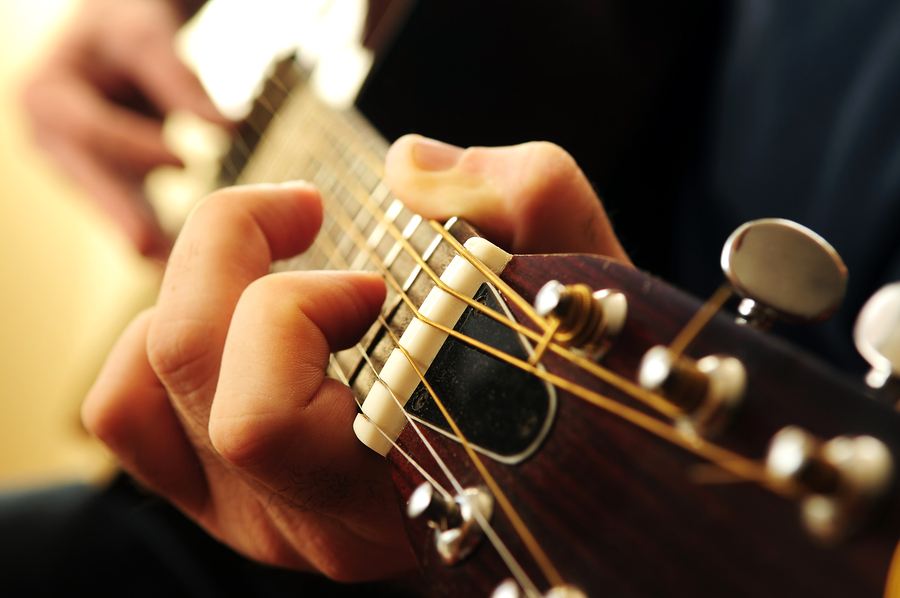May 16, 2019 by Klaus Crow
Photo by Bigstock photo
 For guitar players who starting out learning to improvise, it can be quite a challenge.
For guitar players who starting out learning to improvise, it can be quite a challenge.
Playing a bunch of notes within the pentatonic scale (or any scale in that matter) is one thing, but being able to really tell a story with those notes is a complete different thing.
Because that’s what phrasing is all about: “How you tell a story”.
If you’re telling a story you want to draw the audience’s attention. We’ve all come across those boring teachers in the classroom who can’t keep your attention for more than 30 seconds. They talk in the same low monotone voice on and on and on and on. It’s almost like they don’t even breath. They probably don’t. :)
The fact that they can’t keep your attention has nothing to do with the subject, but it has to do with how they present the subject, how they bring you the story. And they forget the most important thing. They have to bring the story to life!
To bring a story to life you want to hear and feel the passion. You can hear that in the way people speak. When people get excited about stuff they tend to raise their voice. If they want to tell you a secret or gossip they start to whisper. If something is really important we will emphasize particular words. When someone tells you a creepy story they’ll start to talk slower, fuel their voice by fire and when the story gets really exciting they’ll suddenly pause to get you to the edge of your seat and then relentlessly take you to the climax.
There are dozen ways to draw the listener’s ears and fortunately for a lot of people that goes without saying. Most people will talk passionately about their new bought car, their cool job or an attractive person of the opposite sex. The same applies to music. You want to hear the same excitement in your soloing. To do so you have to learn great phrasing.
Phrasing is not about what you play but how you play it!
Let’s see what you can do to improve your phrasing and make your playing come alive:
Continue Reading
 Sweep picking is a picking technique that was invented and developed by jazz guitarists Chuck Wayne and Tal Farlow.
Sweep picking is a picking technique that was invented and developed by jazz guitarists Chuck Wayne and Tal Farlow. “And when our baby stirs and struggles to be born it compels humility: what we began is now its own.” ~ Margaret Mead
“And when our baby stirs and struggles to be born it compels humility: what we began is now its own.” ~ Margaret Mead Most intermediate guitar players can find the notes across the neck on the 6th (low E) and 5th string (A). This is essential for learning barre chords, soloing and a lot of other stuff. If you don’t know the notes on the 6th and 5th string yet check out
Most intermediate guitar players can find the notes across the neck on the 6th (low E) and 5th string (A). This is essential for learning barre chords, soloing and a lot of other stuff. If you don’t know the notes on the 6th and 5th string yet check out